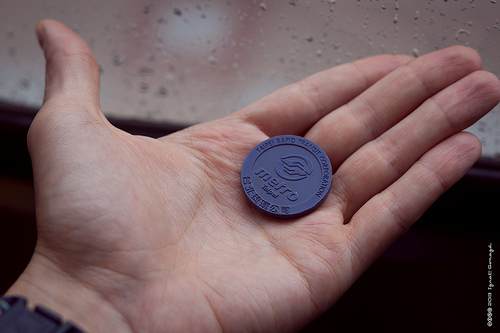Mass transit, or public transportation, refers to shared transport services that are available for anyone to use. It includes buses, trains, subways, trams, monorails, minibuses, shared taxis, ferries, and hydrofoils, among other modes. Privately reserved vehicles like rental cars, hired taxis, or charter buses are not considered mass transit.

Hydrofoils like this zip between different cities in Europe
The big advantage to using public transportation is that it is much less expensive than hiring your own transportation. For instance, taking a nonstop bus from Los Angeles to San Diego costs about $10 per person on average, but renting a car and paying for gas would cost at least $100. Even if you had a packed car with 5 people, taking the bus would still be less expensive.
Getting Around Inside A City
Intra-city transit, or transit within a city, is usually extremely cheap: a few dollars at most per ride. This is what lots of people use to get to work each day. In more developed cities, intra-city transit usually consists of subway lines, rail lines, tram lines, bus routes, and/or ferry routes. In cities in less developed countries, you’ll likely see minibuses or shared taxis. If you are just getting around within a city, you should not need reservations to ride the public transportation.
Payment methods for intra-city transit vary from city to city and country to country. However, usually when I visit a city with a well-developed transit system I will buy a tourist transit pass for however long I plan to stay, and if that is not offered I will order a transit card (like the ORCA card in Seattle) and pre-load it with as much money as I plan on using. Sometimes transit cards require a deposit, but you can usually get it back if you return the card for recycling. If you don’t have a transit pass or transit card, be sure to have the local currency in small denominations, because usually you can’t get cash back when paying your fare. Occasionally you can find ticket vending machines at popular stops or stations and use a credit card to buy a single journey ticket, but even if these machines do exist, they may not take US credit cards that lack chip-and-pin technology.
In less developed countries, most of the time the only method of payment for intra-city transit is cash. Be sure to carry small denominations or you might get shortchanged.

Taipei Metro tickets are unique in that they are plastic coins.
Going From City To City
Intercity transit, on the other hand, is used for getting between cities. It is a bit more expensive than intra-city transit but still relatively cheap most of the time. The most common forms of intercity transit are long distance trains and buses, but other means like ferries and shared taxis/vans (“colectivos” in Spanish-speaking countries) can be used over long distances as well. You might need reservations to ride on intercity transit so it is good to check. Sometimes cities have separate hubs or central stations for intra-city and intercity transit (e.g. Split, Croatia), and sometimes they have multiple hubs for intercity transit (e.g. Paris, France).
To buy a long distance bus, train, or ferry ticket to another city, you will have to go online, make a phone call, or go up to the ticket counter of the the operator. Some routes may fill up and require reservations ahead of time. Most operators will accept credit card, especially in more developed countries. Sometimes multi-trip passes exist like the Eurail Pass, which can be a decent value for the money and give you more flexibility to board trains, buses, or ferries without reservations.
Shared taxis or vans usually just leave as they fill up, and sometimes the driver is paid directly. These are more common in developing countries and over distances that can be covered in half a day or less (enabling the driver to return home after work). Be sure to agree upon a fare before departure.
The Bottom Line
Mass transit is a great way to explore a city, country, or even a continent without using too much money. And it is great for the environment.
As an added bonus, I have met a lot of great people while riding public transportation that I would have never met otherwise, and even got invited to visit a small village in the wilderness of northern Sweden.
Anyways, hope that you came away from reading this with at least an understanding of the basics of public transportation. Thanks for reading!
-Josh
Photo by Capt’ Gorgeous 
Photo by ignat.gorazd 


